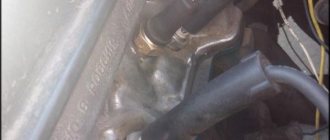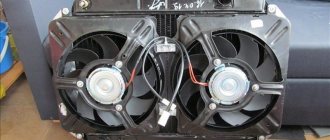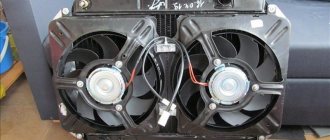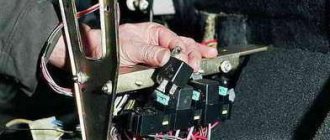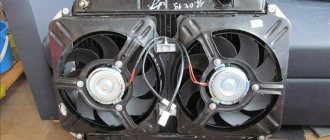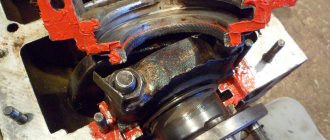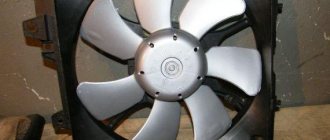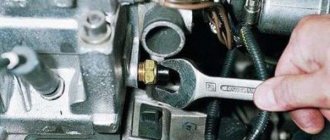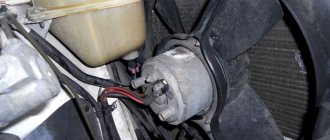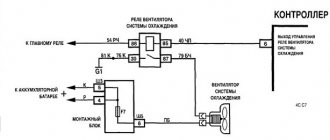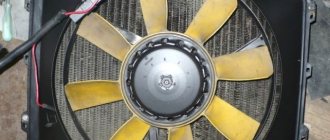Every PC user should know how to check the fan on a laptop, because it is this component that prevents the entire system from overheating.
During normal use, laptop fans exhaust air and produce a soft to moderately audible sound. If your laptop's cooler is quiet, the air around the vents is calm, and your laptop is very hot, the cooling is likely not working.
Fans play a critical role in the longevity and functionality of a laptop. You should definitely replace a broken cooler immediately to avoid equipment failure.
Presence of sound
A properly functioning laptop cooler sounds like a fan with a soft propeller; however, it may not be heard when you first turn on the computer because it is running at the slowest possible speed.
To provide more airflow and cool the system, the fan speeds up as you continue to use the laptop. It will likely switch to a faster and louder mode after about five minutes when the laptop reaches operating temperature.
Laptops with better cooling may have incredibly quiet fans that are only audible in quiet rooms by attentive listeners. Please note that the fan may be broken or clogged if it makes irregular pulsating or loud noises.
What is a radiator fan
To begin with, let us note that all the information provided is more intended for VAZ owners, although it can also be useful for drivers of foreign cars.
The VAZ cooling fan is an ordinary electric motor powered by 12 V from the vehicle’s on-board network. Its shaft is equipped with an impeller that generates a powerful air flow and directs it to the working surface of the radiator. The fan is mounted on a special frame (frame) to the front part. At the rear it is protected by a radiator grille.
Most VAZ cars are equipped with one fan. But there are also exceptions. For example, the NIVA cooling fan has two independent electric motors with an impeller that turn on simultaneously. This is necessary so that the engine of a domestic SUV cools faster.
Feeling the air
Even if you can't hear the fan running, the user should feel air coming out of the vents. The air flow may be very weak when the computer first turns on, but it increases as the system reaches normal operating temperature.
The laptop fan should then start pushing air out of the main exhaust port, usually located on one of the sides.
You can place the palm of your hand on the system, about half an inch from the vent, and feel the air flow. If your laptop is quiet and there is no air flow, the cooler may be broken.
If you can hear the fan running but only a small amount of air flow is felt from the vents, the cooler may be closed, in which case you should clean the vents with compressed air.
Error Watching
If your computer regularly restarts without warning, slows down during normal use, or displays the dreaded BSoD or Blue Screen of Death, there may be a problem with the fan.
The fan itself is attached to the radiator as part of the cooling unit, so even if it is pushing air, there may be problems with another part of the unit. The system can overheat if the cooling block fails or the thermal paste connecting the processor and the cooling block wears out.
Temperature check
Even if the fan is pushing some air out of the vents, it may still have a hardware problem, such as a motor problem, that is preventing it from cooling the computer sufficiently.
Some laptops display temperature readings when turned on. But if the PC does not provide such information, it is advisable to use a hardware monitor program to check the processor temperature.
If the program registers a constant temperature of over 70 degrees Celsius while the laptop is doing absolutely nothing, the fan may be broken.
Elimination of overheating
If the user is sure that the cooler works, but does not cope with its task, he needs help.
One way to help is to eliminate unnecessary processes. Mac users can isolate and kill unwanted processes using Activity Monitor, while Windows users can use Task Manager.
Linux users also have a number of options available for managing processes.
How to check the cooler on a laptop
Proper operation of the cooling system extends the life of the computer for a long time. If there are problems, parts begin to overheat and fail. If the equipment begins to “slow down” or becomes very hot, then first of all you should check the functionality of the cooler on the laptop.
Software check
The easiest way to find out the cause of problems and eliminate their consequences is to use programs.
On many devices, the Bios affects the activity of the cooler. This is especially true for expensive laptops, although there are exceptions.
IMPORTANT! If you have laptops from Acer or MSI, then you should take a closer look at this method.
Turn off your device and turn it on again. Once the boot screen appears, enter the Bios . This can be done using the Del, F2 or ESC keys. The combination depends on the model of device purchased.
Going to the main menu, select the Power , which is responsible for the temperature of the processor and cooler. Now you need to find CPU Q-Fan Control and CPU Fan Profile . It is important that the first indicator is active. The second parameter is responsible for the fan rotation intensity:
For Lenovo owners, this advice may not be relevant.
Using software
You don’t have to go into the BIOS menu and solve a potential problem in the usual way. To do this, you only need the Internet and the name of the desired program.
SpeedFan is an excellent application that allows you to determine the health of your cooler. Download it from the official source and install it on your PC.
As soon as you launch the program, you will see what the temperature is on the sensors. It will also be possible to manually change the cooler speed setting. To do this, uncheck the box next to “Auto-adjust fans” and write the required rotation speed, calculated as a percentage.
If the recorded number of revolutions is not suitable due to severe overheating, you can change the data in the “Configuration” section. The utility will automatically adjust to the selected value.
Another useful application is AIDA64 . It is preferable to use for those who enjoy heavy games, especially online.
If the temperature does not exceed 50 degrees, then the cooler is working properly. Exceeding this limit indicates existing problems.
Cooler hardware check
You can use a more difficult method - hardware verification. To do this, you will have to disassemble the laptop and diagnose the cooler manually.
Before removing the fan, be sure to read the instructions. If the warranty period has not yet expired, it is highly recommended not to disassemble the laptop yourself. The best solution in this situation is to turn to professionals.
If you do not want to visit a service center, you can make an independent attempt to diagnose. It is important to know that there is no need to completely remove the cooler. You only need wires for testing on another device.
To do this, you will need a USB black and red wires on the other . Follow this algorithm of actions:
- Connect the black wire of the cable to the black wire of the cooler.
- The red wire must be connected to the red one.
- Plug the USB into another device.
IMPORTANT! If the fan starts to rotate, then everything is fine. You may just need to clean the cooling system or replace the thermal paste.
To get rid of dirt, it is not necessary to resort to removing the cooler from the laptop case . It is enough to blow it out with a can of compressed air (in extreme cases, a vacuum cleaner will do). If there is too much dust, you can use a brush to remove it.
Then wipe the laptop with tissues or a cotton swab soaked in alcohol. This will increase the performance of the device even in the absence of a hardware problem.
If the methods described above do not produce results when you independently check the cooler for functionality, take your laptop to a service center. Professionals will certainly cope with the problem that has arisen!
Causes of malfunction on the VAZ-2114
- Fan motor malfunction . The problem is resolved by replacing it with a working one;
Replacing the fan motor
Changing the fan relay
Checking for an open circuit
Changing the coolant temperature sensor
Video about replacing the fan switch sensor
Checking the functionality of the cooling fan motor
The easiest way to check the operation of the fan is to put two straight wires on it: minus and plus.
The plus is taken from the battery, the minus from the car body. If it doesn’t work when the circuit is closed, then that’s where the problem lies. When starting the blades, we look for the problem elsewhere.
Cooling fan operation diagram
Basically, when a non-working fan is detected, several reasons are identified:
- The electric motor is burnt out, there is a break in the winding;
- Wear of carbon brushes;
- The bearing has jammed or fallen apart.
If in the last two cases the problem is solved with little effort, so to speak, the first involves replacing the electric motor.
Important! When installing wires, the main power supply to the electric motor must be disconnected.
Fan repair
Turn on the ignition in the car. First, check the fuse, it is shown in the photo, if the fuse is intact, look further. Now you can check the fan itself, there are wires with a plug coming from it, disconnect this plug and carefully connect the wires directly from the battery to the plug (plus or minus there is no difference) if the fan does not spin, then change the fan itself.
Next, start with the simplest thing, this is the radiator sensor that will turn on the cooling fan. Remove the plugs from the radiator sensor and connect them together as shown in the photo; if the fan starts, it means the radiator sensor is damaged, change it.
Photo. Arrow 1 shows the cooling fan fuse, arrow 2 shows the fan relay.
If it does not start, then connect the wire that goes to the fuse box directly to ground (usually it is white with a black stripe), if it starts, it means there is a break in the second black wire, find the break, or connect it well to ground. Then connect these two wires together, and if the fan starts working, then you have connected the black wire to ground well. That's it, we fixed the cooling fan, but if that doesn't help, then read below.
Procedure for checking
The operation of the fan on the VAZ-2114 is connected through 2 fuses. One of them is also responsible for the sound signal. You can check it by pressing the horn. If there is no sound, replace it with a whole one. It is located in the mounting block, it is 20 ampere, marked F5.
Check and, if necessary, change fuses
The second one is located under the dashboard, on the passenger side. Under the casing there are 3 relays with a fuse for each. The middle pair is responsible for the operation of the cooling fan. Replace the blown element with a new one (the fuse can be “ringed” with a multimeter or limited to a visual inspection. To check the functionality of the relay, you will need an ohmmeter). When checking their condition, at the same time make sure that the contacts are in normal condition, and if oxide is detected, clean them.
Important! If you find a blown fuse, you should not limit yourself to replacing it with a new one. It is imperative to find the cause of the break, since in the near future the new one will burn out again.
Checking the fan switch sensor
If the cause is not found, the next step should be to check the functionality of the fan switch sensor . It's not difficult to do this. Disconnect it and turn on the ignition, while paying attention to the fan. The rotation of the blades indicates that the cause of the problem is in the sensor.
Checking the cooling system fan switch sensor
Due to the fact that very often the sensor begins to fail, sending erroneous signals, it is recommended to check it in one more way . To do this, you will need a container with antifreeze or antifreeze, a thermometer and a multi-mert. Wires from the measuring device are connected to the sensor terminals, the threaded part of the sensor is immersed in the liquid. Heat the contents of the container to the temperature at which the fan operates (on a VAZ 2114 - 92 degrees). When the contacts close, the multimert will sound a sound signal. This means the sensor is working, if this does not happen, you can safely throw it away and buy a new one.
Healthy! Before installation, it is advisable to check the functionality of the purchased sensor in the same way.
Video about checking the cooling fan switch sensor
Final check
Having eliminated the problem, start the car engine. The fan motor should start after approximately 5 minutes of idling . If this does not happen, and the temperature has reached the desired level, diagnose the faults again.
Video about the reasons why the cooling fan on the VAZ-2114 does not turn on
As you know, fuel combustion occurs during operation of a car engine. This generates a large amount of heat as part of the conversion of thermal energy into mechanical energy. In this case, excess heat must be removed from the internal combustion engine to the external environment to prevent overheating of mechanisms and parts.
The engine itself should not overheat above the optimal 80-90°C. For this purpose, special devices are used, which together form a cooling system. Cooling systems are also divided into two types: liquid and air. In modern cars, these two types of systems are combined and are hybrid.
Although the liquid system is considered to be the main one, air cooling also deserves special attention, without which, under certain conditions, the car engine will inevitably overheat. Let's look at the air cooling system and its malfunctions in more detail.
Read in this article
Cooling fan malfunctions: symptoms and solutions
As mentioned above, an internal combustion engine is a complex system that requires uninterrupted operation of the cooling system. Otherwise, the power plant will overheat, which can lead to breakdown and, consequently, expensive repairs.
The liquid cooling system, through which special coolants (antifreeze/antifreeze) circulate, is closed. In a nutshell, the principle of operation of a liquid cooling system is that during engine operation, liquid circulates through its jacket (channels in the BC and cylinder head), which removes excess heat from heated parts.
The hot fluid then enters the radiator, cools, and returns to the engine to cool it. As the radiator passes, the heated coolant enters a network of thin tubes. This helps it cool quickly. Also, when the vehicle moves, the incoming air flow carries excess heat outside the engine compartment of the vehicle.
It is important to understand that only when these two systems interact does the engine effectively cool. Simply put, the fan thermal switch (fan sensor) trips and the fan turns on. As a result, an air flow is created and the fan runs until the optimum temperature is reached.
It consists of at least four blades, fastened together at a special angle for maximum air intake and delivery. The most popular was the 8-blade impeller. By design, the fan drive can be divided into 3 types:
- mechanical
- hydromechanical;
- electric;
Today, the first type is practically not used, especially on civilian vehicles, although it remains on powerful SUVs as the most reliable. The second type is also gradually fading into the background. In any case, if the device fails, immediate diagnosis and elimination of the cause of the failure is necessary.
Checking the cooling fan
So, when a modern fan breaks down, you need to take into account that they are often electric. As a rule, the problem lies in the wiring, sensors, fuses, etc. Among the main fan malfunctions, the most common cases are when the cooling fan:
- Doesn't turn on.
- They don't turn off.
- Turns on early.
- Air flow is not directed correctly.
By applying voltage to the fan itself, its serviceability is checked. If it spins, then the problem is not with it. If the fan does not spin, it is better to contact a car service. You can get to the service station on your own, adhering to certain rules:
- Drive at a speed of at least 60 km/h. Then the function of the broken fan will be performed by the incoming air.
- Turn the heater on to maximum while driving to release excess heat into the cabin. It will be hot in the cabin, but the chances that the engine will not overheat increase;
- Watch the engine temperature arrow on the panel. When it approaches the red zone, you need to stop the car, open the hood, and cool the engine.
How to organize PC ventilation. Quick Guide for Beginners
A question that sooner or later faces any PC owner is cooling. Overheating of components causes a decrease in performance, and in the worst case, it ends in processor degradation and chip failure. And vice versa - thoughtlessly hanging the case with fans can turn it into a real vacuum cleaner that will irritate household members with its hum.
The quality of the ventilation system depends on the type and number of fans, how they are connected to the motherboard and their correct location in the computer case. However, first things first.
Main characteristics of fans
Static pressure is the air pressure created by the fan. Depends on its design and the speed of rotation of the impeller. The higher this indicator, the better the fan works under conditions of high resistance (for example, when pumping air through a fine-mesh radiator).
Air Flow (CFM) - The amount of air pumped. Historical units of measurement were cubic feet per minute. Devices with CFM greater than 50 show effective operation.
Rotation speed (RPM) is the number of revolutions per minute. The more, the higher the performance (and noise). Most models do not exceed 2000.
Pulse width modulation (PWM, or PWM) - automatic adjustment of fan speed using the motherboard. Requires a 4 pin connector. Fine tuning can be done using special proprietary utilities.
ASUS Fan Expert
Fan thickness is usually about 25 mm. Thinner versions are available for small packages (HTPC), but are less efficient due to lower static pressure and CFM.
The type of bearing is an important characteristic on which the life and level of noise generated depends. In modern models you can find several types: from the cheapest plain bearing (with a low resource) to the most expensive and rare ceramic rolling bearing and bearing with magnetic centering. The golden mean in terms of service life, price and noise are turntables with hydrodynamic bearings.
Noise level - measured in dBA. The value comfortable for the human ear should not exceed 30 dBA. More fans does not mean noisier. More often than not, the opposite is true, especially if the fans are controlled by the motherboard, which controls the temperature of the components.
- 0–25 dBA - silent PC;
- 25–35 dBA - noise at daytime background level;
- 35–40 dBA - noticeable noise level (can be reduced by moving the computer under the table);
- 40 dBA and above is a loud and uncomfortable noise level.
Size matters
The size of the fan determines its performance and noise level. The larger the diameter, the fewer revolutions you need to make to achieve the desired effect and the quieter it works. Most often, the average user has to deal with fans of the following sizes:
92 x 92 mm is a fading format, to which case manufacturers are paying less and less attention. Comparable in cost to larger, more efficient fans.
120 x 120 mm - cheap and cheerful. The most common and universal. A good four-pin version can be bought within 1000 rubles.
140 x 140 mm is the ideal, according to the author, balance of noise and performance. The price for a decent model starts from 1000 rubles.
200 x 200 mm is a rare solution, but quite effective in terms of cooling and silence. The main problem is finding a replacement in case of breakdown. The second controversial point is the cost, which for famous manufacturers starts from four thousand rubles.
Some manufacturers build real monsters into their bodies.
It is worth understanding that choosing a case with fans of rare sizes can result in some problems if they break. If the case is designed for standard 120/140 mm turntables, it will be easier and faster to compensate for the loss. As practice shows, good 140 mm fans at 600–800 rpm or 120 mm fans at 800–1000 rpm will provide good results and maximum acoustic comfort.
Options for connecting fans to the motherboard. Connector types
Modern fans are connected to the motherboard via a 3- or 4-pin connector. The type of connection will determine whether you can control the fan speed programmatically. More exotic are the 2-pin connector (usually used in power supplies) and the 6-pin connector (with backlight control). Connecting fans directly to the power supply via Molex is considered obsolete.
For 3-pin models, the rotation speed depends on the voltage change. Speed monitoring is possible, but there is no PWM. Often such fans operate at higher speeds and make more noise.
For 4-pin models, the rotation speed is controlled by the motherboard using an additional wire. Modern BIOSes do an excellent job of automatically controlling fans; the main thing is to correctly set the temperature limits in the motherboard settings.
Most modern motherboards have 4-pin connectors, but 3-pin options are still found. If necessary, you can connect a 4-pin fan to a motherboard with 3-pin connectors and vice versa. The fans will operate at standard speeds.
You can also regulate the fan speed using the rheobass. But the era of such devices is becoming a thing of the past: in modern cases there is no place left for them, and their functions have been taken over by motherboards.
If there are more fans than connectors on the MP, special splitters are used. However, you shouldn’t get carried away with them: it’s better not to install more than two fans on one channel. Otherwise, you will have to provide them with additional power, which will lead to the appearance of extra wires in the case.
In any case, already at the stage of purchasing a motherboard, you need to understand how many turntables the future system will need. Despite the higher cost, preference should be given to 4-pin fans with the most advanced control method.
How many fans are needed and how to install them
The modern model of hull construction involves the creation of a kind of wind tunnel: cold air enters from the front, and hot air is thrown out through the rear and upper walls. Cases with fans on the side wall and on the bottom have almost disappeared from sale. Most often, manufacturers try to create excess pressure in the case (they install more fans for blowing), and this is not just like that. Firstly, hot air will be removed more efficiently, and secondly, less dust will remain in the case.
One fan is quite enough to cool an office-level system without a video card with some kind of Celeron, Pentium, Sempron or A10, where the TDP of the processor is around 50 W. The author prefers to install the fan on the blower, since the cooler on the processor will help with the release of hot air, especially if it is a tower type.
The location of the fan is shown schematically and depends on the type of case and the location of components in it.
Two case fans (one in the front, one in the back) can handle a combination like Ryzen 3 (Core i3) + GTX 1650 (RX 550).
Three fans (two in front, one in back) - an application for the middle level: Ryzen 5 (Core i5) + 2060 (RX 5500XT).
Four turntables will ensure normal operation for the Ryzen 7 (Core i7) + 2070 (RX 5600XT).
Everything changes when Her Majesty the Gaming Graphics Card comes into the case - the main heater of any gaming PC. To keep the heat dissipation of HEDT systems in check, in addition to a spacious case, you need five or six fans: two or three front fans for intake, one rear and two top fans for exhaust. Or a custom SVO.
What's the result?
Having examined the operating features of the radiator fan, it becomes obvious that the internal combustion engine cooling system as a whole and the engine cooling fan itself make it possible to maintain the required temperature regime of the internal combustion engine.
It is also important to understand that the uninterrupted operation of the cooling system depends on the coordinated operation of all components. For example, the fan normally turns on when the engine temperature rises above 90°C to cool the engine, and then should turn off.
However, in practice, you can often independently diagnose a problematic device, identify the cause of the breakdown and, if possible, fix the problem. Finally, we note that most problems associated with engine overheating can be avoided through preventative checks, as well as regular cleaning of the cooling fan terminals and contacts.
There is air in the engine cooling system: symptoms of airing, reasons for the formation of an air lock. How to bleed the engine cooling system.
The engine cooling fan turns on when the engine is cold or after the ignition is turned on: the main causes and solutions to the problem.
Design and principle of operation of a radiator cooling fan. Common faults, troubleshooting and repairs. Tips for use.
Common engine cooling system failures: water pump, thermostat, radiator, cooling fan and others. How to determine the reasons yourself.
Why does the engine overheat or boil while the cooling radiator is cold? Signs of engine overheating, how to prevent serious consequences.
Radiator in the cooling system, design and principle of operation, thermoregulation of the coolant. Troubleshooting and self-repair
Diagnostics of a cooler on a laptop
Breakdowns and malfunctions in the cooling system of laptop computers quickly affect the overall performance of the system and, in addition, significantly increase the risk of defects associated with thermal damage to processors, memory, hard drives and temperature-sensitive areas of the board. Therefore, when a laptop starts to slow down when running familiar applications, experienced users immediately try to assess the degree of overheating and check the operation of the fans.
Testing a laptop cooler
Due to the compact arrangement of parts inside the laptop, opening the case and disassembling it becomes much more difficult than for the system unit of a stationary PC. An inexperienced user risks damaging the fasteners and contacts, so it is better to start testing with a software check.
Method 1: SpeedFan
The SpeedFan utility collects data on fan operation and provides the ability to configure parameters such as propeller rotation speed, the percentage of CPU load allocated to certain system processes, bus frequency, set a proxy server for Internet access, etc.
- Open SpeedFan. The application detects system-controlled fans and displays them in a list in the lower half of the window. Nearby the speed is shown as a percentage of the maximum value and arrows for adjustment.
- The screenshot shows that Speedfan only detected one custom cooler on the GPU. Please note that this program function will not work with old motherboards, or if the fan contacts are connected incorrectly.
SpeedFan is a multi-purpose application that is great for monitoring the temperature of chips and hard drives. You can manage these settings through a convenient user interface, without having to open the BIOS or open the computer case.
Method 2: Changing the BIOS Configuration
BIOS settings contain many parameters and set the interaction between the computer's hardware, directly affecting its performance.
- To open the BIOS interface, reboot the laptop and press the F2 key; sometimes F9 or Del can be used for a similar purpose in the device.
The menu depends on the brand and manufacturer of the motherboard. Go to the “Advanced” tab and click on “Hardware Monitor” or “Temperature”.
Next, open the “Save & Exit” tab, select the “Save Changes and Reboot” item, confirm the decision with the “Yes” option. After rebooting, the fan will run faster or slower according to the new settings.
Method 3: Physical check
For hardware testing, you will need to partially disassemble the laptop. Inattention and lack of necessary skills can lead to damage to parts, so we do not recommend that ordinary users do this on their own. It is better to take the laptop to a service center, which will help save your nerves and not lose the warranty.
- Before starting work, carefully study the disassembly instructions.
Unscrew the bolts and remove the cover. To check, dismantling the cooler is not necessary; it is much more important to gain free access to the wire through which the power is supplied. Usually this is a 4-Pin or 3-Pin cable, but there is also an option with two contacts.
